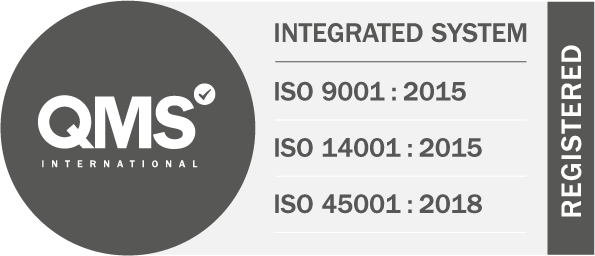Top 10 tips to pick the right van for your business
Choosing a new van is an increasingly complex process with thousands of variants to choose from. Follow our Top 10 tips to make sure that your next van is a perfect fit for your business
Choosing a new van is an increasingly complex business if you want to make the right decision.
Today, a wealth of manufacturers offer a vast array of choices with almost unlimited customisation options.
Follow our Top 10 tips to make sure that your next van is a perfect fit for your business.
Start with a list – Before you even look at a website or visit a dealership, spend time considering exactly what you need. Every minute spent defining your exact requirements can slash hours from the process and enable suppliers to provide a detailed offer. The more specific you can be, the better, as it will save time in the long run.
Paying for payload – When ordering a van, you are paying pounds for kilos, so it is important to consider what it will be carrying. Do you need a space ship to carry bulky, but not particularly heavy items, or a load lugger, which will be weighed down with heavy cargo? The choice can influence the type of van you select, including its length, height, and payload capabilities. It will also affect your choice of power unit and what type of bulkhead is required.
Fuel for thought – Diesel is still the default choice for commercial vehicles, offering an ideal balance of power, flexibility, reliability, and economy, but its days are numbered under current government plans. The proposed ban on the sale of new petrol and diesel vehicles is still a decade away, but the preparation can start now as a growing number of alternative fuel vehicles go on sale, such as plug-in hybrids and pure electric vans. Your decisions should be based on wholelife costs and type of use; plug-in vehicles can offer particular benefits in urban areas.
Safety first – A safe fleet is a cost-effective fleet. Crashes and avoidable damage add thousands to vehicle running costs each year, but a safety-first approach can protect drivers and your balance sheet. Modern technology, such as telematics and dashcams, provides essential insights into the cause of incidents and potential solutions for minimising on-road risk. Driver tiredness monitors and axle weight monitors can also protect your business. Consider safety when specifying vehicles; equipment including reversing sensors and autonomous emergency braking could more than pay for themselves through reduced incident costs.
Equipped for anything – Good choices when specifying a van can make it more efficient and effective on the road, while also protecting its value. It pays to hold discussions with drivers about how vans are used and the common issues they face. This could range from drivetrains (including 4x4) to driver comfort or operational considerations. For example, air conditioning and cruise control might benefit drivers, while built-in generators and compressors could make employees more effective. A towbar can also be a valuable extra that provides additional flexibility, along with built-in steps to provide easier access to the cargo area.
A secure environment – Security is a vital consideration, as enhanced locking systems can protect expensive equipment. Solutions to combat break-ins include deadlocks and hook locks, along with fittings to prevent ‘peal and steal’ attacks, where doors are prised open. A final line of defence could also include a built-in safe so that even the most determined criminal leaves empty-handed.
Colour of money – White tends to be the colour of money when it comes to protecting residual values, but vans can still advertise your brand. A base vehicle can be wrapped in any colour or imagery you want, which can then be removed at defleet time. Modern wrapping technology can turn vans into mobile billboards, with clever designs making you stand out from the crowd and extracting extra value from your fleet investment.
Shelf improvement – Racking plays a vital role in turning a vehicle into a safe, efficient workplace. Using modern materials and design, fleets can adapt their vehicles to enhance the working environment of drivers, with equipment and tool storage that is intuitive and well designed. Driver input is important at the earliest stages of design, where their detailed knowledge of potential improvements can be used to guide development. For example, you could split interior space, with one section for dirty work tools, while a separate area houses other equipment to keep it clean.
Sit and think – Vans can be specified to carry everything from equipment to employees or both. Additional rows of seating can add valuable carrying capacity if commercial vehicles need to carry staff and equipment to site. However, it is vital to discuss the tax implications; legislators recently concluded that some vans with two rows of seats could be considered a car for tax purposes.
Cycle of life – When specifying vans, it is important to consider what the operating lifecycle of the vehicle will be. For example, can the business be certain there will be enough demand to justify purchasing the vehicle outright and running it for anything between five and eight years? Or are managers certain they can lease a van for three years without needing to return it, which would incur hefty early termination penalties? In the current environment, flexibility may be more important, in which case flexible rental could provide a vehicle that can be returned without penalty whenever business conditions change.
Reflex Vehicle Hire is an award-winning provider of flexible vehicle provision, with a vast range of vehicles available in every configuration. We can develop bespoke equipment packages for a customer’s exact needs, while every vehicle comes with ‘Safety as Standard’, through our industry-leading Driive with Reflex modular risk management service. For details, visit our Vehicle Hire or Telematics section, alternatively contact our team of industry experts.
To see how other fleets have specified their vans to support their business success, visit our Case Study section.
Share to:
Find out more
Find out how Reflex Vehicle Hire can help your company.
Call 0330 460 9913 or visit our contact us page.








@2x.png)

